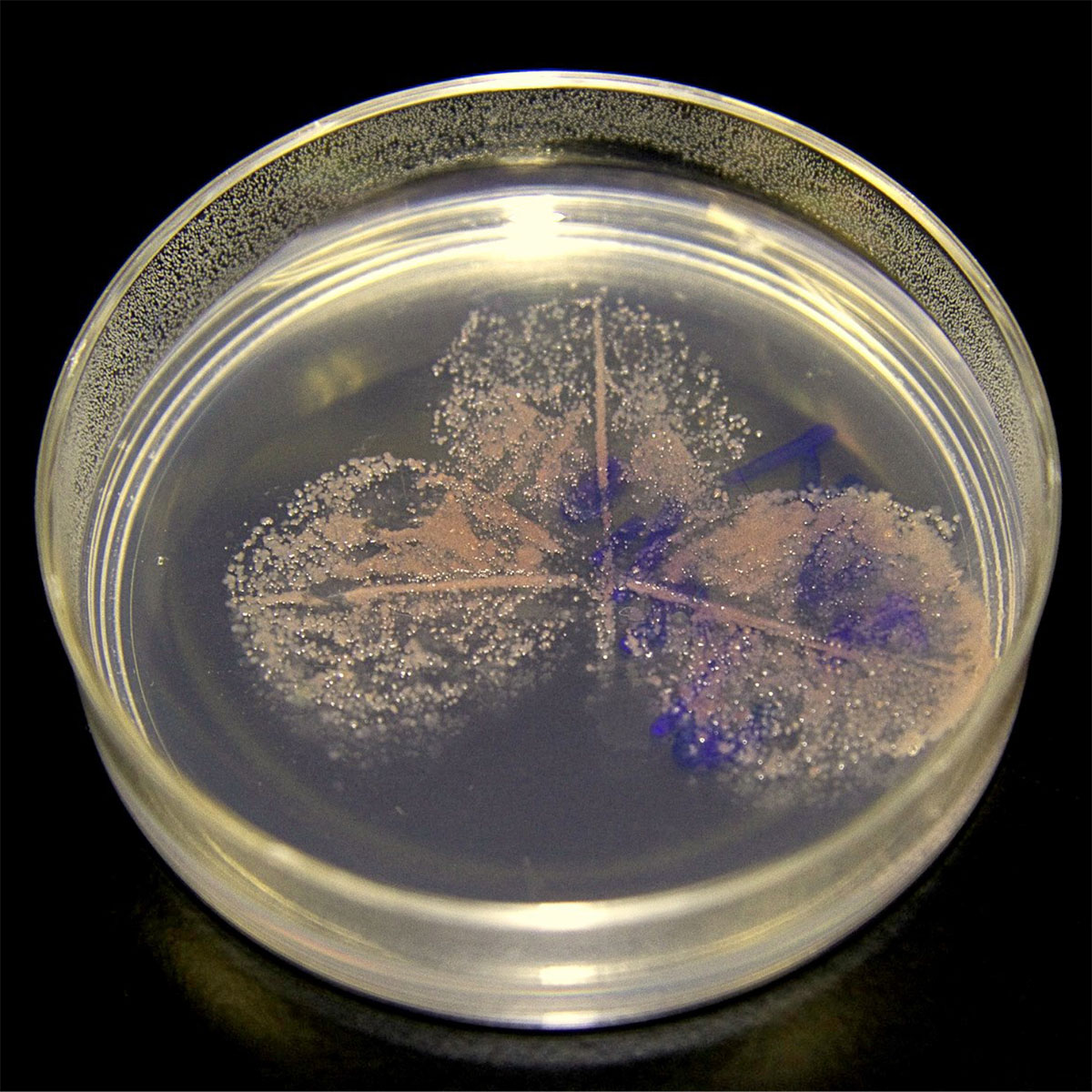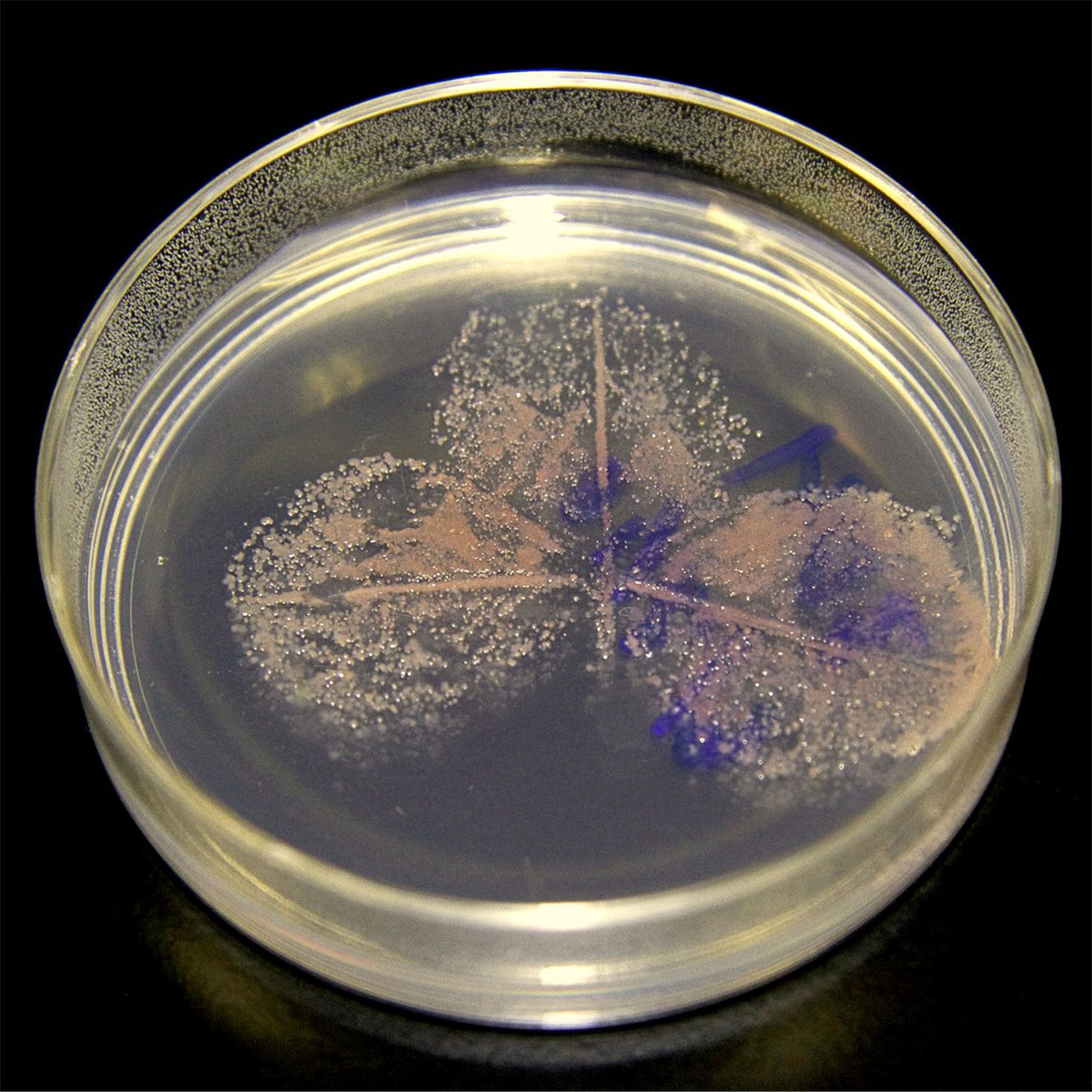Evolving an Explanation
Article by Tara Roberts, University Communications & Marketing
How a Struggling Lab Experiment, a Bacterium That Pees and a Curious U of I Professor Are Helping Answer a Mystery of Biology
When trying to understand the evolutionary concept of degeneracy, it helps to think about hybrid cars.
A typical hybrid runs using two different kinds of power: gas and electricity. Each power source works best under different circumstances. The small gasoline engine keeps the car cruising down the highway, while the electric motor gives the engine a boost for driving up hills or accelerating.
When a similar situation exists in biology, it’s known as degeneracy: Organisms, especially bacteria, can evolve two distinct systems with seemingly identical purpose. But unlike the hybrid car and its dual engines, it’s often unclear why an organism has two ways of achieving one result.
“We’re getting pretty good at understanding the ‘what,’ but we have a hard time demonstrating the ‘why,’” says Chris Marx, an associate professor of biological sciences in the University of Idaho College of Science.
There are very few examples, Marx says, where scientists can say, “This has A and B pathways: A is a benefit under this circumstance, and B is a benefit under this one.”
Now, Marx and his colleagues at Harvard University have discovered the “why” behind two seemingly degenerate pathways in a common bacteria. Their research will be published in the June issue of the journal Current Biology and is available online now.
Finding a Question
Marx studies methylotrophic bacteria, which can eat compounds that only have one carbon atom, like methanol or methane. They’re common in nature, found in soil and on plants, where they devour other organisms’ byproducts.
He began studying methylotrophs 1998 during his graduate studies at the University of Washington. His worked continued from 2005 to 2013 while Marx was a faculty member at Harvard, and he brought the research with him to U of I in 2014.
He has delved into the bacteria’s practical purposes — for example, the company he founded, KnipBio, has shown they can be grown in mass quantities, dried and used to feed farmed fish. Here in Moscow, his academic lab uses them to conduct experiments that reveal fundamental physiological and evolutionary processes. His goals include developing a mathematical model of how methylotrophs’ metabolic pathways work, and how future changes in these pathways would translate to changes in growth rate.
Such experiments are important, Marx said, because they are the first steps in increasing scientists’ ability to predict the relative probability of evolutionary outcomes.
“In principle, it would allow us to consider what aspects of an organism are most under selection in a given environment, and whether it is likely to observe few or many possible outcomes,” Marx said. “In practice, there would be huge implications ranging from predicting the future of cancers or diseases, to the ability of organisms to adapt to a changing world.”
The path to his latest discovery began with trying to improve his lab’s system for doing these evolution experiments.
In order to accurately follow the performance of many populations at once, Marx turned to using a robotic system for measuring bacterial growth. Because methanol evaporates too rapidly under these conditions, Marx decided to start feeding it methylamine, a similar but less volatile compound. He also decided to use a different, but closely related strain of bacteria that would no longer clump under these circumstances, and would thus be easier to study.
But when he tried to run the experiment, it didn’t work.
“It turns out that this better strain sucks at growing on methylamine,” Marx says.
Marx zoomed in on the bacterium’s method for turning methylamine into cell material. Methylotrophs have two possible ways to break methylamine down: One occurs mostly inside the bacterium and provides less energy — we’ll call this the Inside Path. The second, the Outside Path, uses different steps, provides more energy and occurs mostly between the bacterium’s inner and outer membranes.
The strain Marx was trying to study had the Inside Path alone, as many methylotrophs do in nature. No methylotrophs have the Outside Path alone. But some, including others Marx had studied, have both.
Which led to the hybrid car question.
“Why would you have two ways of doing something?” Marx says. “This experiment was originally set up simply to improve how we do evolution in the lab, and it turned into, ‘Why does this even exist in nature this way?’”
Zooming In
To begin understanding why the two paths sometimes existed at once, Marx and his research team had to understand the paths’ individual purposes.
They knew from earlier research that the Outside Path allows methylotrophs to thrive on methylamine.
But what about the Inside Path? Why did it exist when it did such a terrible job of helping methylotrophs eat methylamine and grow?
Marx grew two strains of the Inside Path-only bacteria that wouldn’t grow on methylamine. After a few dozen generations of being fed only methylamine, both started growing slowly.
Through the Genomics & Bioinformatics Resources Core, a U of I facility operated by the Institute for Interdisciplinary Data Sciences (IIDS), he sequenced the complete set of DNA bases, or genome, of the two strains.
The genomes revealed two interesting things. The first was unsurprising, Marx says: Both strains had mutations that allowed them to better use the Inside Path to process methylamine.
The second was unexpected: Marx discovered that his strains contained mutations that appeared to increase their ability to get rid of the ammonia.
As methylotrophs process methylamine, they’re left with excess nitrogen that becomes ammonia. In Outside Path methylotrophs, the ammonia can just diffuse away. But it accumulates to toxic amounts in Inside Path bacteria.
One of Marx’s strains mutated a protein that can lower cellular pH, which can counter the effect of excess ammonia. The other began releasing the nitrogen as urea — a major component of urine.
“This is the first example that we can think of where there is a bacterium that pees,” Marx says.
So, Marx knew that Inside Path-only bacteria could survive on methylamine, but they struggled. But if the Outside Path worked so much better, why didn’t all the methylotrophs have one? Why did they still have the Inside Path?
Why bother having a gas engine and an electric motor if the electric motor didn’t work?
Discovering an Answer
The answer was in the nitrogen.
Like all organisms, methylotrophs need some nitrogen to live. But, as Marx had seen, Inside Path bacteria struggled with too much nitrogen, causing ammonia buildup.
But what if the path was sometimes the only way to get nitrogen at all?
Marx and his colleagues hypothesized that the Inside Path might be important when the bacteria was in an environment with other carbon sources, but no nitrogen sources other than a low concentration of methylamine. Lab tests confirmed the idea: The bacteria thrived eating a nitrogen-less compound and using the Inside Path to take a small amount of methylamine and turn it into a healthy amount of nitrogen.
This discovery in turn allowed the researchers to explain the existence of the two paths.
“We were able to figure out what all of this suggests in nature,” Marx says.
From a previous project Marx oversaw to sequence several genomes of Methylobacterium, they knew that the Inside Path was present in all strains. But the Outside Path evolved separately, and was acquired at least three separate times by strains that can grow fast on methylamine.
They concluded that in nature, only methylotrophs that live in an environment where they can eat methylamine for energy have an evolutionary advantage to acquire and maintain the Outside Path. But all strains contain the Inside Path machinery to use methylamine as a nitrogen source while eating other compounds.
Just like in a hybrid car, the two power sources kick in when they’re needed most.
Moving Ahead
Marx’ discovery contributes to the global conversation on the fundamental workings of evolution, but it also helps him with his ongoing research at U of I.
After uncovering why the two paths exist, Marx found that adding the DNA for the Outside Path to a bacterium with only the Inside Path is surprisingly easy. He can encode the Outside Path on a free-moving loop of DNA called a plasmid, insert the plasmid into an Inside Path-only bacterium and instantly create a strain that flourishes on methylamine. (While plasmid transfer happens in nature, its results aren’t usually so speedy.)
This sets up a whole set of questions Marx would like to explore.
“With our new methylamine-consuming superstar strain, my lab is now embarking on further experiments,” he says. “No doubt, more surprises are in store.”








